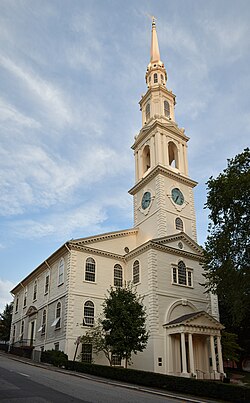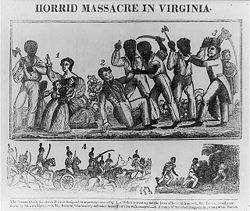| Part of a series on |
| Baptists |
|---|
 |
| |
As of 2014, about 15.3% of Americans identified as Baptist, making Baptists the second-largest religious group in the United States, after Roman Catholics. [1] By 2020, Baptists had become the third-largest religious group in the United States, with the rise of nondenominational Protestantism. [2] [3] [4] Baptists adhere to a congregationalist structure, so local church congregations are generally self-regulating and autonomous, meaning that their broadly Christian religious beliefs can and do vary. Baptists account for about one-third of all Protestants in the United States: many mainline, many evangelical. Divisions among Baptists have resulted in numerous Baptist bodies, some with long histories and others more recently organized. Many Baptists operate independently or practice their faith in entirely independent congregations.
Contents
- History
- 17th century
- 18th century
- 19th century
- Missionary organizations
- 20th century
- Organization
- Practices and Beliefs
- Major Baptist denominations in the U.S.
- National Baptist organizations
- Evangelical Baptist Conventions
- Historically Black Baptist churches
- Mainline Baptist Conventions
- Independent (non-aligned) Baptist churches
- Baptist educational institutions
- Demographics
- Baptist image in United States
- Criticism of Baptist churches
- See also
- Bibliography
- Black Baptists
- Primary sources
- References
- External links
English Baptists migrated to the American colonies during the seventeenth century. Baptist theological reflection informed how the colonists understood their presence in the New World, especially in Rhode Island through the preaching of Roger Williams, John Clarke, and others. [5] During the 18th century, the Great Awakening resulted in the conversion of many slaves to Baptist churches, although they were often segregated and relegated to lower status within Baptist churches. Although some Baptists opposed slavery during this period, many Baptists in the South remained slave holders and still others considered it a political decision and not a moral issue. [6]
Baptist congregations formed their first national organization, the Triennial Convention, in the early 1800s. In 1845, the Southern Baptist Convention—today's largest U.S.-based Baptist denomination—split from the Triennials, who refused to support slavery. [7] After abolition, large black Baptist churches were formed due to the continued practices of segregation of Blacks. Today, the largest denominations among African Americans are the National Baptist Convention and the Progressive National Baptist Convention. [8]





